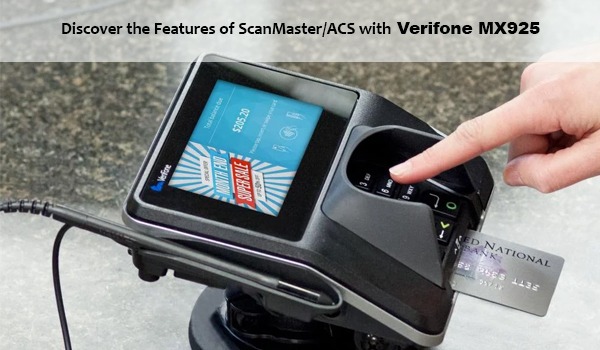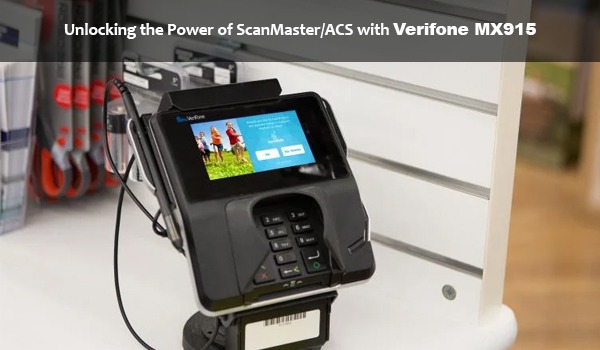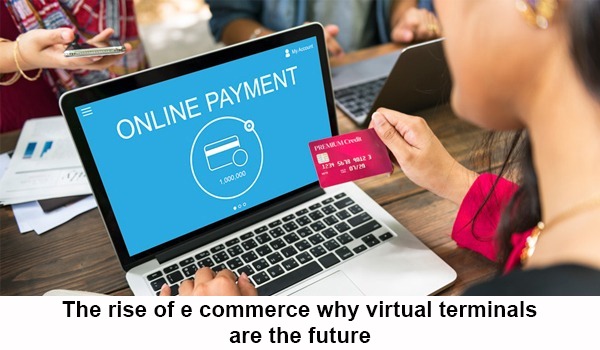
Introduction
In today's fast-paced digital world, convenience is key. When it comes to payment processing, businesses are increasingly turning to virtual terminals. These innovative tools simplify transactions, making it easier than ever for companies to accept payments from customers. In this blog post, we will explore the convenience of virtual terminals and how they streamline transactions for a seamless experience.
Understanding Virtual Terminals: Simplifying Payment Processing
Virtual terminals are online interfaces that allow businesses to process payments electronically. They eliminate the need for traditional card-swipe machines and enable secure transactions to be made remotely.
Advantages of Virtual Terminals for Businesses
Virtual terminals offer several key advantages for businesses that streamline their payment processes. Let's explore some of these benefits in detail.
Increased Efficiency and Mobility
1. Accessibility Anytime, Anywhere
Virtual terminals can be accessed from any location with an internet connection, providing businesses with the flexibility to accept payments at any time. Whether a business operates from a physical storefront or remotely, this accessibility ensures that transactions can be processed swiftly and efficiently.
2. Multi-device Compatibility
One of the great benefits of virtual terminals is their compatibility with multiple devices. Whether customers prefer to use a desktop computer, a tablet, or a smartphone, virtual terminals can seamlessly adapt to different screen sizes and operating systems, providing a consistent and user-friendly experience across devices.
Enhanced Security Measures
1. Encryption and Data Protection
Virtual terminals prioritize the security of sensitive customer information. They utilize encryption technology to safeguard payment data during transmission, ensuring that it cannot be accessed or intercepted by unauthorized individuals. This encryption provides businesses and their customers with peace of mind and protects them from potential data breaches.
2. Fraud Detection and Prevention
Virtual terminals incorporate robust fraud detection and prevention mechanisms. Through advanced algorithms and machine learning, these terminals can identify suspicious transactions and alert businesses to potential fraudulent activity. By minimizing the risk of fraud, virtual terminals help businesses safeguard their finances and reputations.
3. Compliance with Industry Regulations
Compliance with industry regulations is crucial for businesses, especially when it comes to payments. Virtual terminals accommodate these requirements by implementing measures that adhere to industry standards, such as the Payment Card Industry Data Security Standard (PCI DSS). This compliance ensures that businesses can safely and legally process payments, without facing penalties or reputational damage.
Cost-effectiveness and Scalability
1. Minimizing Hardware and Maintenance Costs
Traditional card-swipe machines can be expensive to purchase and maintain. In contrast, virtual terminals eliminate the need for specialized hardware, reducing both upfront and ongoing costs for businesses. This cost-effectiveness makes virtual terminals an attractive option for startups, small businesses, and those looking to cut down on unnecessary expenses.
2. Providing Valuable Analytics for Growth
Virtual terminals provide businesses with valuable analytics and reporting features. Through these insights, businesses can better understand their payment trends, customer behavior, and revenue patterns. Armed with this information, businesses can make informed decisions, identify areas for improvement, and drive their growth strategy forward.
Simplified Payment Management
1. Streamlining Transaction Processes
Virtual terminals streamline transaction processes by offering a user-friendly interface that simplifies the payment experience. Whether it's a one-time purchase or recurring payment, businesses can easily manage transactions with just a few clicks. This efficiency saves time for both the business and the customer, leading to improved satisfaction and repeat business.
2. Convenient Invoice and Billing Management
Virtual terminals enable businesses to generate and send invoices directly to customers, eliminating the need for manual invoicing. This convenience ensures that payments can be made promptly and accurately. Additionally, virtual terminals can automate billing schedules, reducing the administrative burden for businesses and ensuring timely payment collection.
3. Automating Recurring Payments
For businesses offering subscription-based services or products, virtual terminals automate recurring payments. This automation eliminates the need for manual invoicing and follow-ups, streamlining the payment process for both parties. By eliminating payment friction, businesses can enhance customer retention and improve overall cash flow.
Real-world Applications of Virtual Terminals
Now, let's explore some real-world applications of virtual terminals across different industries.
E-commerce and Online Retail
1. Simplifying Online Purchases
Virtual terminals streamline the online purchasing process, enabling customers to complete their transactions quickly and securely. Whether it's a single item or a shopping cart full of products, virtual terminals ensure a seamless checkout experience.
2. Secure and Convenient Mobile Transactions
With the rise of mobile commerce, virtual terminals offer secure and convenient payment options for customers using smartphones and tablets. By leveraging mobile virtual terminals, businesses can tap into the growing mobile market and provide a frictionless checkout experience for their mobile customers.
3. Automated Order Fulfillment
Virtual terminals can automate order fulfillment by integrating with inventory management systems. This integration enables businesses to process payments, update stock levels, and initiate shipping processes automatically, reducing manual work and minimizing errors.
Service-Based Businesses
1. Streamlined Appointment Scheduling and Payments
Service-based businesses, such as salons, spas, and medical practices, can benefit from virtual terminals by streamlining appointment scheduling and payments. Virtual terminals make it easy for customers to book and pay for services in one seamless process, saving time for both businesses and customers.
2. Subscription and Membership Management
For businesses offering subscription-based services or membership programs, virtual terminals automate recurring payments and membership management. This automation simplifies the billing process, reduces administrative work, and enhances customer retention.
3. Simplified Fundraising and Donations
Virtual terminals provide nonprofits and fundraising organizations with a simple and secure way to collect donations. Whether through online campaigns or regular recurring donations, virtual terminals make it easy for supporters to contribute, increasing overall fundraising efforts.
Conclusion
Virtual terminals provide businesses a convenient and efficient way to streamline their payment processes. From increased efficiency and mobility to enhanced security measures, virtual terminals offer numerous advantages for businesses across various industries. By implementing and integrating virtual terminals effectively, businesses can transform their payment experiences and drive growth.
In today's fast-paced digital world, embracing the convenience and efficiency of virtual terminals is essential for businesses seeking to meet customer expectations, simplify transactions, and stay one step ahead of the competition. With the rising demand for streamlined payment solutions, virtual terminals provide a win-win solution for both businesses and their customers.









